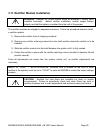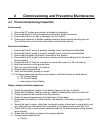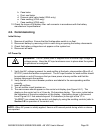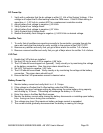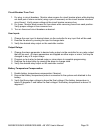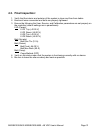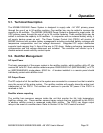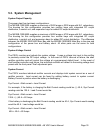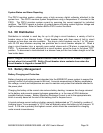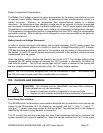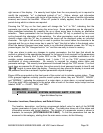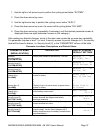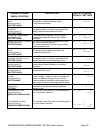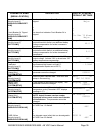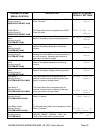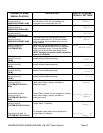
MX28B1200/2400 MX28B1200/4800 –48 VDC User’s Manual Page 34
System Status and Alarm Reporting
The PSCU monitors system voltage using a high accuracy digital voltmeter attached to the
system bus. The PSCU monitors system temperature using a temperature IC mounted in the
PSCU. The PSCU monitors system current by summing the current reported by individual
rectifiers. The PSCU reports a number of system alarms including system high/low voltage and
high/low temperature. Refer to Section 5.6 for PSCU control functions.
5.4. DC Distribution
Distribution is included in each bay for up to 48 plug-in circuit breakers, a variety of bolt in
breaker sizes or four telecom fuses. Circuit breaker bays with three rows of bolt in circuit
breakers or fuse bays are also available. The plug-in circuit breakers can be 1 to 100 amps,
with 60-100 amp breakers requiring two positions and a circuit breaker adapter kit. When a
plug-in circuit breaker trips, a normally open switch closes and a CB alarm is reported by the
PSCU. To disconnect a load attached to a circuit breaker, move the lever to the down “OFF”
position. To disconnect a load attached to a telecom fuse pull the fuse holder straight out of the
fuse holder base.
NOTE: Plug-in Circuit breaker alarm contacts close when the circuit breaker is tripped
but not when it is turned OFF. Bolt-in Circuit breaker alarm contacts close when the
circuit breaker is tripped or turned OFF.
5.5. Battery Management
Battery Charging and Protection
Battery charging and protection are integrated into the MX28B DC power system to support the
primary function of providing power to the load. Accurate measurement of battery parameters
like voltage, current and temperature are used to maintain and protect the batteries attached to
the power plant.
Charging the battery at the correct rate reduces battery heating, increases the charge returned
to the battery and prevents excess hydrogen generation or, in the case of VRLA batteries,
possible thermal runaway. Battery Maximum Recharge Current is set to the appropriate rate,
which is usually based on the size of the battery plant in Ampere-hours.
A typical recharge current setting is battery capacity (abbreviated as “C”) divided by number of
charging hours. As an example, a “C/10” rate will basically return the battery to full charge in 10
hours. A C/8 rate is probably the highest current, which should be considered for charging
under normal circumstances.



